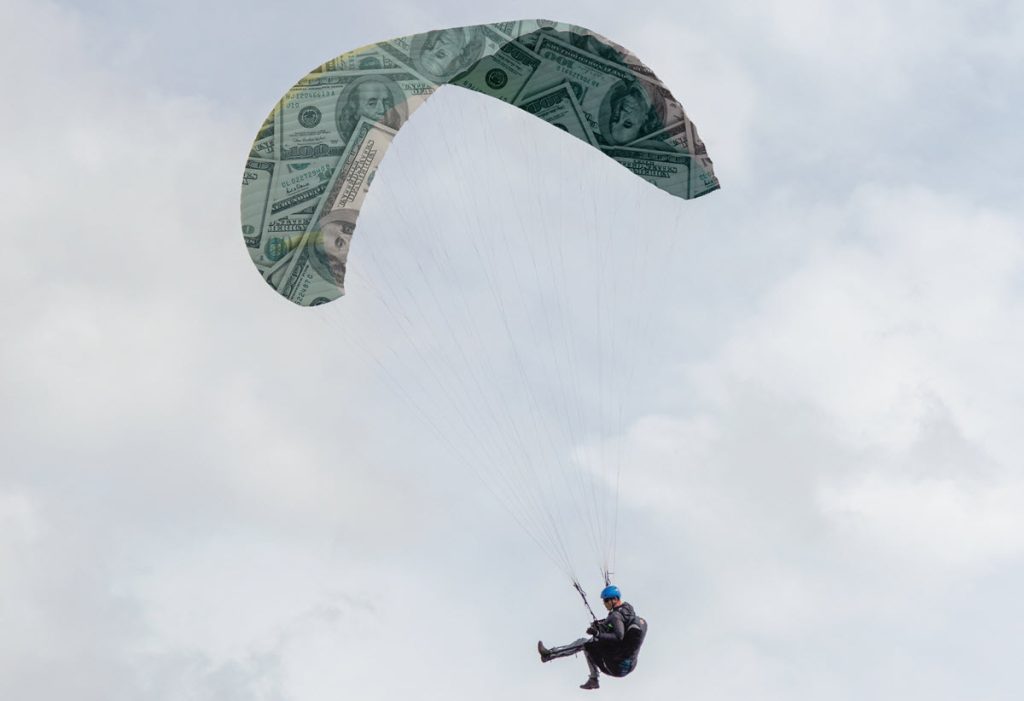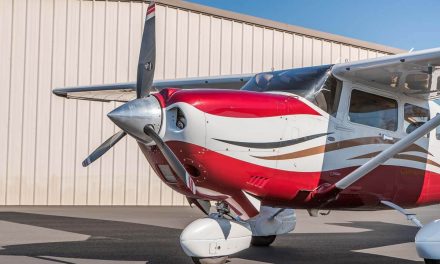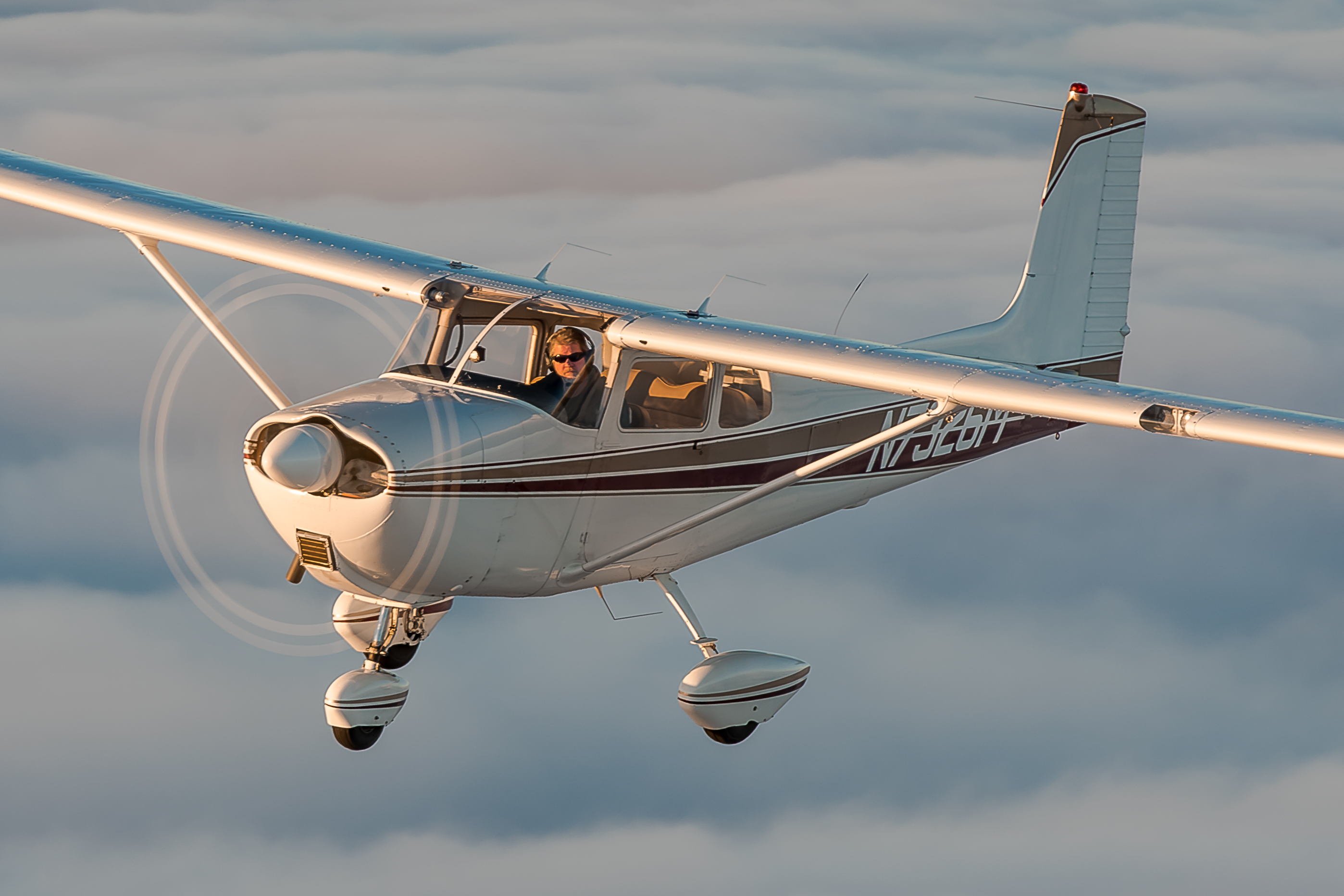Do we really need more safety equipment? Just get a safe airplane and you don’t need more safety devices, right?
My favorite safe airplanes are the Cessna 172 and the Piper Cherokee. Sure, there are a lot more airplanes that are safe than just those two models, but I think simple is better, and I like the proven designs.
Yes, I like new and innovative aircraft like the Cirrus. I also like all the fancy electronics. As you might have guessed, I am kind of a gadget nut and techno fan. But usually, I like all those new electronics when they are on my desk or in my pocket. When it comes to airplanes, I still believe that simple is better.
But simple isn’t always the best or always the safest. My Smith Miniplane was pretty simple — no electric, no radio, etc. But it was small, quick, and not as easy to fly as the Cessna 172.
So do some research. I figure it is always good to evaluate your flying situation regularly, like at least once a year. And during the evaluation you can make decisions on what type of equipment you fly with, the type of flying you do, and decide if it is a “safe” aircraft for you. This evaluation helps owners to make purchase decisions for additional equipment or a different aircraft.
SAFETY DEVICES
We’re not going to evaluate the cost-effectiveness of every safety item in this article, but here are some of the devices we’re talking about:
- Oxygen tanks
- Ballistic parachutes
- Airbag shoulder harness
- Three- or four-point shoulder harnesses
- CO detectors
- Fire-suppressant systems
- Fire extinguishers
- Breakout tools (those hammers that crack or break glass)
- Survival kits
- Tiedown kits
- Life vests (life jackets, for over water)
- Flares
- Handheld ELTs
- Personal locator beacons
- Handheld radios
- Handheld GPS
- Solar chargers
Evolving Levels of Safety
Take a look at the type of flying you have been doing. When, where, how often, etc. You might discover that the way you like to fly doesn’t warrant a big, fast, complicated aircraft. Personally, I also discovered, to my surprise, that I was not in this “flying thing” for my ego anymore. Don’t get me wrong, I still have an ego — perhaps more accurately spelled EGO. I like big, fast, sleek airplanes.
But I also know how I fly, I recognize my limitations, and realize what I am most comfortable in, and that is not the same as what my EGO thinks.
For me, flying is like riding a motorcycle, but from a different elevation. It needs to be fun, safe, and affordable. I need to be able to use my common sense. And my common sense says maybe, just maybe, safety is a higher priority then I think, especially as I get more experienced.
Safety has been more prevalent in my flight planning and flying. I have been watching the weather with more of a critical eye. In the past, I’ve been out flying in weather when I probably shouldn’t have. It was legal and relatively safe, but the risk was higher than it should have been.
Now I’m a little more conscious of the marginal conditions. Being a parent (and older), and actually losing family and friends in plane crashes, has actually made me feel more mortal.
And being in the business of selling aviation insurance added to the perspective. Since safety has become more important in my flying, I decided to investigate a few safety devices and see if they really can save me any money.
Insurance and Safety Devices
Aviation insurance underwriters would like pilots to have every known safety device available. They want us to participate in all the safety programs and training classes that are possible. That’s all with the hope that pilots and aircraft will not crash, and the underwriters will not have to pay any claims. If they don’t pay claims, they make more money.
So from an insurance standpoint, what safety device will save you money on insurance? A parachute? How about a set of pop-out floats? What about rollover bars for low-wing aircraft, or the new ADS-B requirements? Anyone remember the TCAD anti-collision systems?
You get the idea. Many things will increase safety, but will any of them save you money? It appears that the answer is “maybe.”
The bottom line seems to be the answer to this question: “Will it keep you flying longer and lower the cost of ownership?” If so, that would amortize the costs of your plane over more years, and thus the device would (conceptually) save you money.
But that’s a pretty hard thing to prove. I hate to say it, but the insurance companies are the ones that might be the biggest benefactors in the safety business. Sure, pilots will be safer and have fewer crashes, but anything we install that makes our aircraft safer does so at the out-of-pocket expense of the owner.
Let’s consider the other places where we could try to claim that safety devices save us actual cash:
Reduced Insurance Premiums. As noted above, underwriters do not lower insurance premiums because of safety devices, as opposed to some home insurance programs. Allstate and American Family, for instance, will lower premiums for certain homes if you get a security system installed. Does this work in aviation also? Are there devices that lower your premiums? No — at least none of which I’m aware.
Reduced Operating Expenses. We know it will cost money to buy safety equipment, have it installed, and use it. Will ADS-B lower the fuel bills? Probably not. Will a parachute lower the annual inspection cost? No!
So where do we cut costs with safety? Insurance! And to do that, the underwriters will have to see fewer claims — in other words, that device has to stop accidents or prevent high financial payouts, on a larger scale than one plane and pilot.
So Safety Is the Only Point
The only way, then, that safety devices could lower all of our premiums is if all of us reduced our claims at the same time, due to a safety device.
If there is an accident, the safety device can save lives, but the insurance company still pays the repair bills on the plane itself. If it doesn’t stop the aircraft from crashing, being damaged, or hurting the occupants, it can only reduce the loss to the insurance company. It doesn’t eliminate the loss, so it can only save them some money, but it still means there was a claim. And that means they can still raise the premium.
The best example might be the parachute. Something like a ballistic parachute can potentially save the occupants in a catastrophic failure of the aircraft (the Cirrus aircraft is designed with a parachute to save the occupants), but does it really help the insurance company?
I think this is where the general flying public makes a mistake in their thinking.
The Ballistic Parachute Example
When we think of having a ballistic parachute on the aircraft, we are thinking of how safe we are, and that is the most-important thing. But I’m not quite sure when the owner of an aircraft with a ballistic parachute will use it. Is it when the aircraft engine fails? My first thought is that if the engine quits, I’ll look for a place to land. If I run out of fuel (engine quits), I’ll look for a place to land. So, does that mean I’ve got to wait for a structural failure before the parachute becomes valuable?
If a person starts to look at the claim history of many of our aircraft, you’ll find very few structural failures. There are still lots of crashes from VFR into IFR. A parachute won’t necessarily save the aircraft. If you parachute in the dark or in the weather and you can’t control where you are landing, there will still be damage to the aircraft.
And structural damage claims are often from the loss of control on landing and takeoffs, or engine failures forcing off-airport landings. But none of these seems to be the time to pull the ripcord. I suppose you could argue that the engine failure could warrant the parachute. But if you lose control on the landing, a parachute won’t help.
And if you do pull the ripcord?
First question, is it still called “pulling the ripcord” if it’s a ballistic chute in an aircraft? And if you pull the ripcord, what happens to the aircraft? Many people think that the aircraft will float gently through the sky. I might be wrong, but my image of a plane floating down with a parachute is directly from one of those National Geographic balloon safari films. I can just see it — the balloon is trying to land, but the high winds are blowing it across the Serengeti. The gondola is bouncing and thrashing through the brush, scattering the water buffalo and elephants. Is that the way it works?
Have you ever watched a skydiver or a balloon pilot land? Most balloons land in a rough, sliding, and somewhat-controlled-bouncing fashion. So, if you pull the ripcord and the ballistic parachute shoots out of the top of your aircraft, how do you control the descent? I’m thinking you don’t; you just ride it out. Most of the parachutes are designed to protect the occupants, but not necessarily the aircraft.
Summary: We can probably save the people in the aircraft from fatalities (not necessarily from injury) with the parachute, but we probably won’t save the aircraft. It doesn’t appear that we can control where the aircraft is going to crash, and we can’t really control the descent.
The insurance companies have already figured this out. They figure the use of a ballistic parachute will probably guarantee a total loss of the aircraft. From a claims point of view, the insurance company can plan on cutting the bodily injury liability losses for every parachute pulled, but not the hull losses. If you look at the insurance rates as they are, liability (property damage and bodily injury) is really the cheapest part of the coverage. Hull protection costs the most.
Which would mean that if I put a parachute on the aircraft, more than likely the insurance hull rate won’t change. If the aviation public starts pulling ripcords too much, rates might actually increase. This (and a few other issues) was actually the case way back when the Cirrus first came out.
Value Is Not Monetary
If underwriters will still have losses and the premiums could still go up, the financial savings for owners are few. It really doesn’t appear that buying and adding a lot of safety equipment will save you money. It will actually cost you money in the beginning.
But obviously, we need the best safety equipment we can afford in our aircraft. Part of that is because the aircraft fleet is getting older, and so are the pilots. One thing we forget is that as we age, we do not bounce back like we did when we were 20 years old. I have had underwriters mention that as pilots age, they see more injuries, and more serious injuries in non-serious accidents. Basically, we break easier as we age, so it’s probably a good idea to add safety equipment that can protect us better. I’m thinking four-point airbag shoulder harnesses, better seats, and maybe even a parachute.
And a few companies might give discounts for safety equipment and/or training. A few will give discounts for Technically Advanced Aircraft (TAA); those discounts require certain minimum equipment such as moving maps, altitude-hold coupled autopilot, in-cockpit weather, etc. You can ask your broker about those.
So we are left with the peace of mind that was the primary purpose of the safety equipment in the first place. We do have to realize that we can’t turn that into insurance savings, as we can sometimes with our homes or cars, largely because of the fact that safety equipment rarely helps save our airplane hulls.
I remember a picture of an airplane in a tree, with the quote, “Flying is not inherently dangerous, but crashing is.” To me, anything that helps the survivability in the event of a dangerous situation is worth it. Safety is more than money!
I always remember that credit card ad: “Personal aircraft $250,000, ballistic parachute $25,000, shoulder-harness airbag system $10,000 … The lives of you and your family — PRICELESS!






